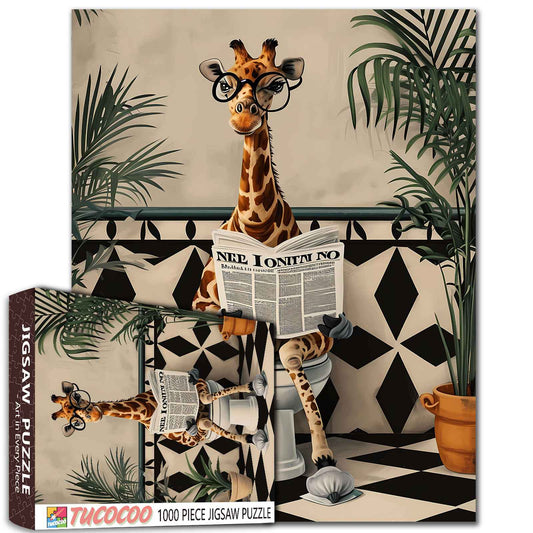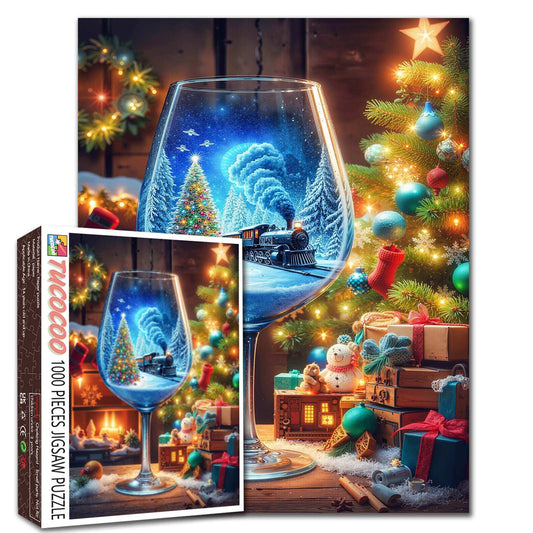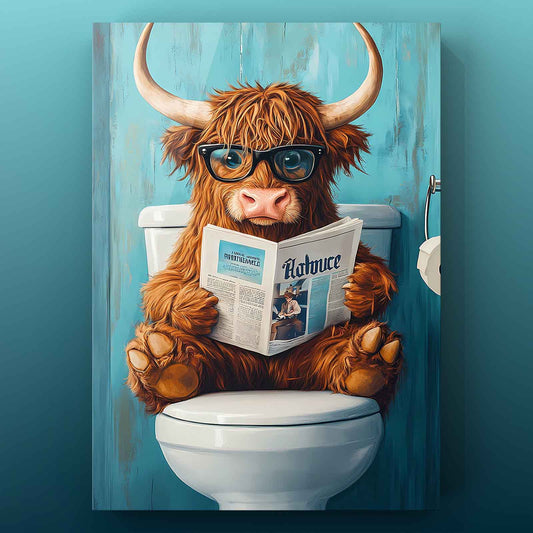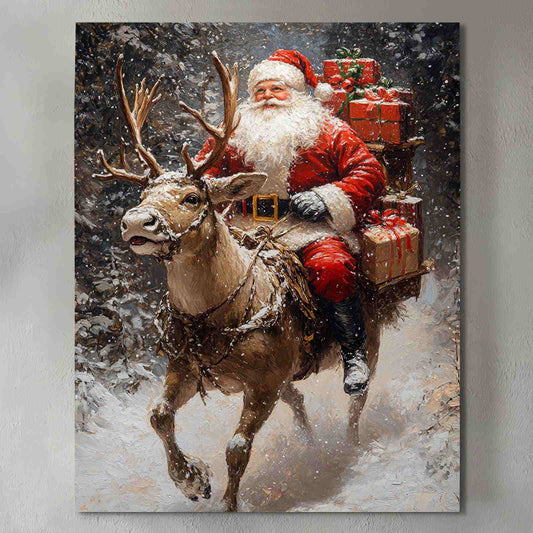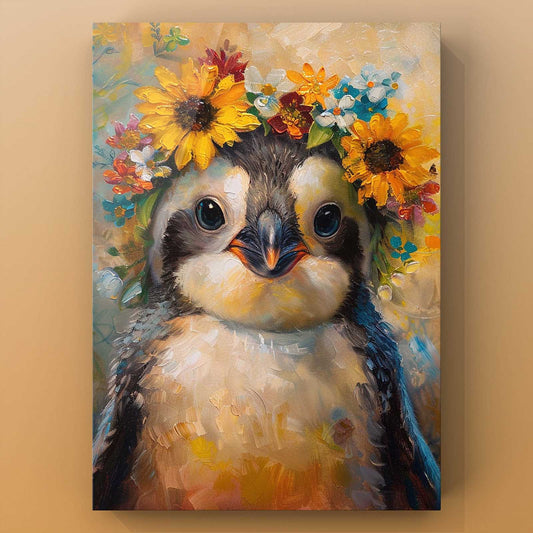
how to glue a puzzle

Have you thought about how to glue a puzzle? Gluing keeps your finished puzzle safe for years. It's a great way to save your work and make art. You need some materials and patience. But the result is amazing. First, get your puzzle ready. Then, use the right glue. Make sure it stays nice. With the right steps, you can show off your puzzle. It will look as good as when you finished it.
Key Takeaways
Gather essential materials like puzzle glue, a brush or applicator, and a backing board to ensure a smooth gluing process.
Before gluing, double-check that all puzzle pieces are in place and enjoy your completed work to ensure a perfect finish.
Choose the right type of glue for your needs—liquid, powder, or spray—each offers unique benefits for application and drying time.
Apply glue evenly across the puzzle surface, allowing adequate drying time to ensure a strong bond and prevent pieces from shifting.
Consider framing or mounting your glued puzzle to protect it and enhance its display, making it a beautiful piece of art.
Using wax paper under your puzzle can help protect your work surface from glue spills and make cleanup easier.
Always follow the manufacturer's instructions for the glue you choose to achieve the best results and maintain the vibrancy of your puzzle.
Materials Needed

When you're ready to glue your puzzle, having the right materials on hand makes the process smooth and enjoyable. Here's what you'll need:
Essential Materials
Puzzle Glue
Puzzle glue is your best friend when it comes to preserving your masterpiece. This specially formulated adhesive is designed to hold your puzzle pieces together permanently. It dries clear, ensuring that your puzzle looks just as vibrant as when you first completed it. You can find puzzle glue at most craft stores or online.
Brush or Applicator
You'll need a brush or applicator to spread the glue evenly across the surface of your puzzle. A foam brush works well for this task, allowing you to cover large areas quickly without leaving streaks.
Backing Board
A backing board provides support for your glued puzzle. It keeps the puzzle flat and prevents it from bending or warping over time. You can use a piece of cardboard or foam board as a backing board.
Optional Materials
Wax Paper
Wax paper can be a lifesaver when you're working with glue. Place it under your puzzle to protect your work surface from any glue that might seep through the cracks.
Frame or Mounting Supplies
If you want to display your puzzle, consider getting a frame or mounting supplies. A frame not only showcases your work but also adds an extra layer of protection.
With these materials, you're all set to start gluing your puzzle. Remember, preparation is key to achieving a flawless finish!
Getting Ready

Finish the Puzzle
Check all pieces are there
Before gluing, make sure the puzzle is done. Look closely to see if every piece fits right. This is important because glue makes it stay forever. Take a moment to enjoy your work and check it's perfect.
Set Up Your Area
Pick a flat, strong spot
Find a flat and strong place to work. A solid table or counter is good. This keeps the puzzle flat while you glue. A strong spot stops any moves that might mess up your puzzle.
Cover the area with wax paper
Put wax paper on your work spot. This keeps glue from getting on the table. Wax paper stops messes and makes cleaning easy when you're finished. With these steps, you're ready to glue with confidence.
Applying the Glue
Now that you're set to glue your puzzle, let's learn how. This part will help you pick the right glue and use it well.
Choosing the Right Glue
There are different types of puzzle glue. Each has its own good points, so pick what fits your needs.
Types of Puzzle Glue
Puzzle glue can be liquid, powder, or spray. Liquid glue is easy to find and use. It spreads well on the puzzle. Powder glue needs water to mix, which takes more work but sticks well. Spray glue, like Loctite Spray Adhesive Multi-Purpose, covers evenly and dries fast.
Expert Insight: Puzzle manufacturing experts say, "The best glue depends on how you like to apply it and how fast it dries."
Loctite Spray Adhesive Multi-Purpose
Loctite Spray Adhesive Multi-Purpose is great for keeping your puzzle safe. It dries clear and keeps colors bright. The spray makes it easy to cover all pieces. It sets in 10 minutes, so you can quickly move on.
Application Techniques
Putting the glue on right is key to a perfect finish. Follow these steps to keep your puzzle looking good.
Evenly Spread the Glue
Put your puzzle on a flat spot. For liquid glue, pour a bit and spread with a brush. For spray glue, hold the can 6-8 inches away and spray evenly. Cover all pieces so none come loose.
Allow Adequate Drying Time
Let the glue dry fully. This is important for it to stick well. With Loctite Spray Adhesive, wait about 10 minutes. For other glues, check the drying time on the label. Once dry, your puzzle is ready to frame or show.
By doing these steps, you'll know the best way to glue a puzzle and keep it nice for years.
Keeping the Puzzle Safe

After you glue your jigsaw puzzle, think about showing it off. This part will help you frame and mount it so it stays nice.
Frame Choices
Framing keeps your puzzle safe and makes it look better. Here's how to pick a frame:
Picking a Frame
Measure Your Puzzle: First, measure your puzzle's size. This helps you get a frame that fits well. A good fit stops the puzzle from moving inside.
Think About Matting: If your puzzle is big or thick, add matting. Matting makes it look fancy and shows off the puzzle. Pick a mat color that looks good with the puzzle.
Frame Style: Choose a frame that matches your room. Whether you like wood or modern frames, it should make the puzzle look good.
Custom Frames: For odd-shaped puzzles, like round ones, get a custom frame. Use a square frame with a special mat to fit the puzzle.
Mounting Tips
Mounting helps keep your puzzle flat and strong. Here's how to do it right:
Using a Backing Board
Pick the Right Board: Use foam board or strong cardboard. These keep the puzzle from bending.
Stick the Puzzle: Put your glued puzzle on the board. Make sure it's in the middle. Use tape or spray to hold it.
Cut Extra Board: If the board is too big, cut it to fit. This makes it look neat.
By doing these steps, you can show your puzzle as art. Whether you frame it or just mount it, these tips keep it looking great for a long time.
First, finish your puzzle and prepare a safe area. Spread glue on each piece to keep it together. After it dries, think about framing or mounting it. This makes your puzzle look like art. Gluing saves your puzzle and turns it into a memory. Get your supplies and start. You'll enjoy keeping your puzzles safe and sound.
FAQ
What glue should I use on puzzles?
When it comes to gluing puzzles, you have several options. You can choose from liquid, powder, or spray adhesives. Each type has its own benefits. Liquid glue is easy to apply and spreads well. Powder glue requires mixing but offers a strong bond. Spray glue, like Loctite Spray Adhesive Multi-Purpose, provides even coverage and dries quickly. Regardless of your choice, always follow the manufacturer's instructions for the best results.
How do I glue a puzzle together?
Gluing a puzzle together is a straightforward process. First, ensure all pieces are in place. Then, apply the glue evenly across the surface. Use a brush or applicator for liquid glue, or spray evenly if using a spray adhesive. Allow the glue to dry completely before handling the puzzle. This ensures a strong bond and keeps your puzzle intact.
Can I frame my puzzle after gluing it?
Absolutely! Framing your puzzle is a great way to display your hard work. Once the glue has dried, measure your puzzle and choose a frame that fits. Consider adding matting for a polished look. A frame not only showcases your puzzle but also protects it from dust and damage.
How long should I let the glue dry?
Drying time can vary depending on the type of glue you use. For Loctite Spray Adhesive Multi-Purpose, you only need to wait about 10 minutes. Other glues might require more time. Always check the label for specific drying instructions. Make sure the glue is fully dry before moving or framing your puzzle.
Do I need a backing board for my puzzle?
Using a backing board is highly recommended. It provides support and prevents your puzzle from bending or warping over time. You can use foam board or sturdy cardboard as a backing. Secure your glued puzzle to the board before framing or displaying it.
Is wax paper necessary when gluing a puzzle?
Wax paper isn't essential, but it can be very helpful. Placing wax paper under your puzzle protects your work surface from any glue that might seep through. It also makes cleanup easier once you're done gluing.
Can I use regular glue instead of puzzle glue?
While regular glue might work, it's not ideal for puzzles. Puzzle glue is specially formulated to dry clear and maintain the vibrancy of your puzzle. Regular glue might cause yellowing or curling over time. For the best results, stick with glue designed for puzzles.
How do I ensure an even application of glue?
To achieve an even application, start by placing your puzzle on a flat surface. If using liquid glue, pour a small amount and spread it with a brush or applicator. For spray glue, hold the can 6-8 inches away and spray evenly. Cover all pieces to ensure none come loose.
Can I remove the glue if I make a mistake?
Removing glue from a puzzle can be tricky. If you notice a mistake while the glue is still wet, gently wipe it away with a damp cloth. Once the glue has dried, removal becomes more difficult and might damage the puzzle. Always apply glue carefully to avoid mistakes.
What should I do if my puzzle pieces shift during gluing?
If your puzzle pieces shift, gently reposition them before the glue dries. Working on a flat, stable surface helps prevent movement. Applying glue evenly and allowing adequate drying time will keep your puzzle pieces in place.



